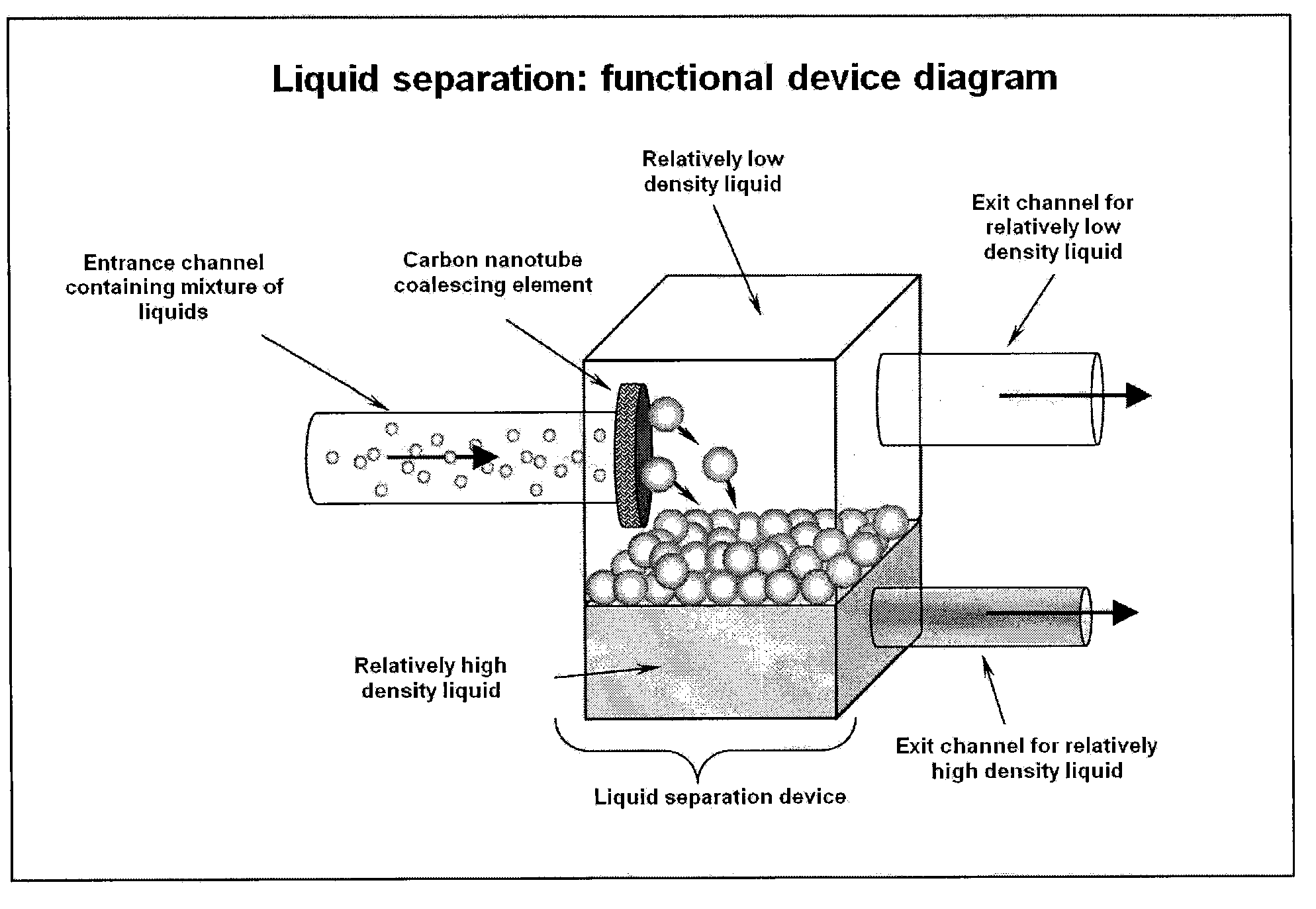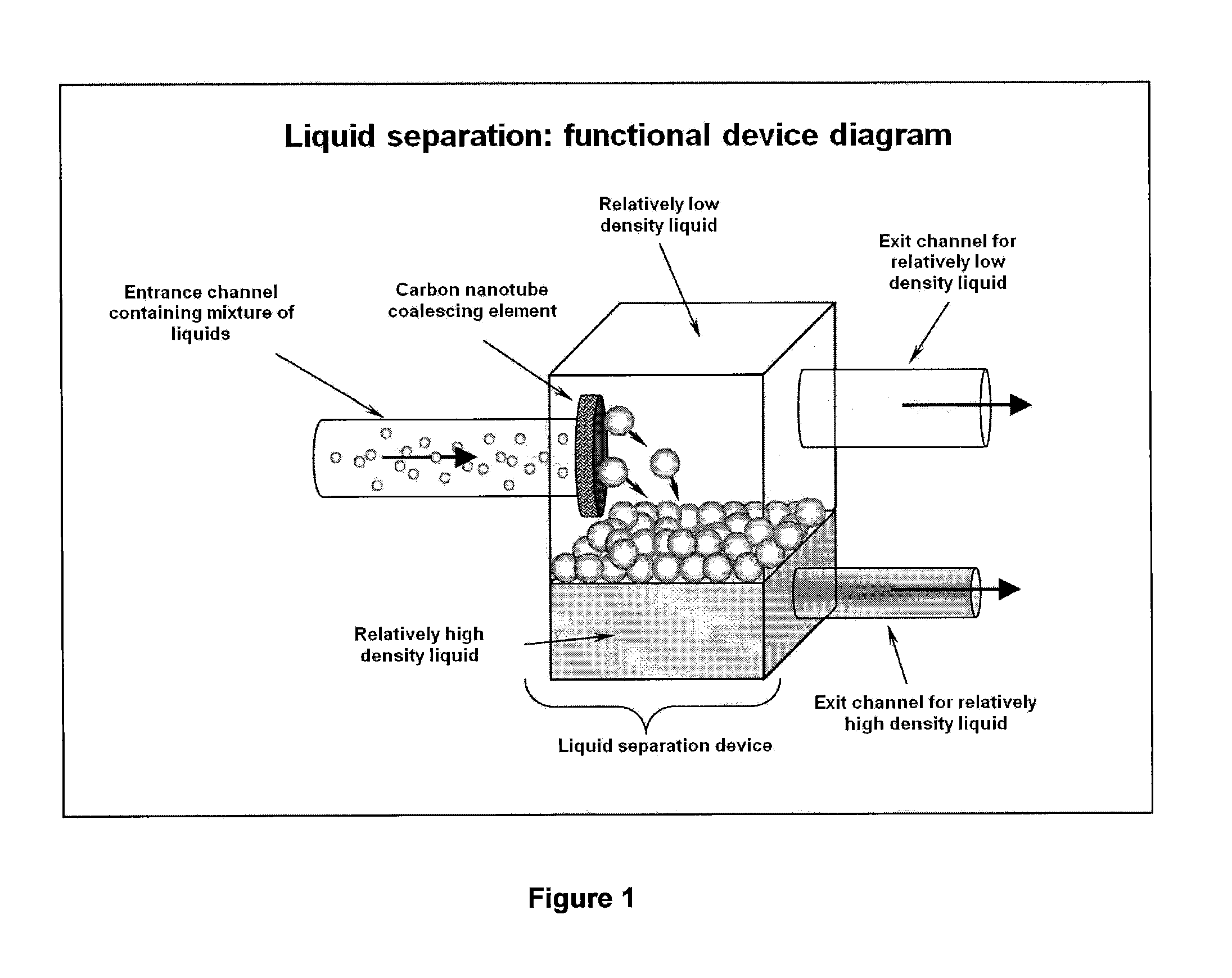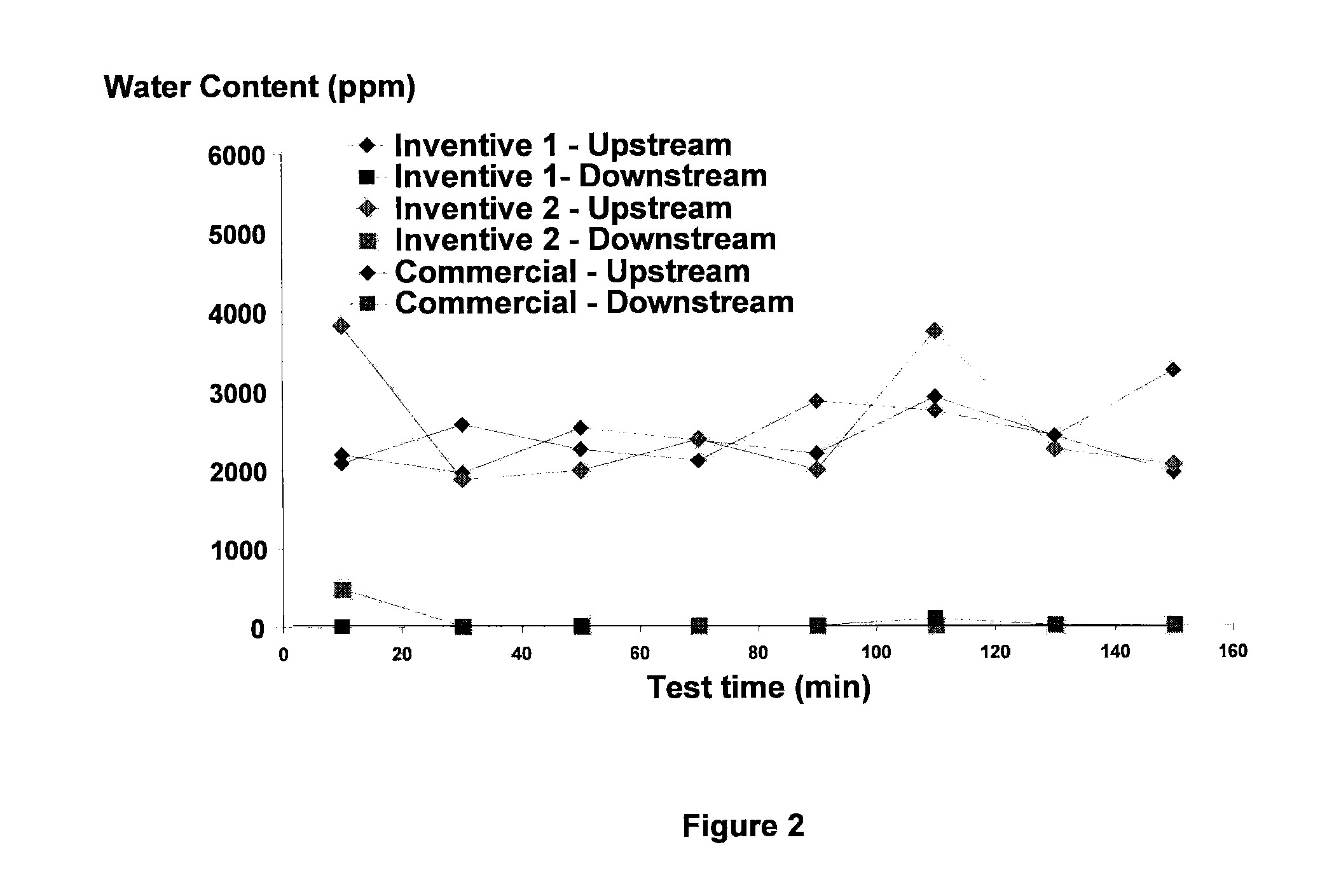Device including carbon nanotube material for separating a liquid emulsion of an organic liquid and water
a technology of liquid emulsion and carbon nanotubes, which is applied in the direction of gravity filters, separation processes, filtration separation, etc., can solve the problems of difficult water separation of these fuels, poor performance of micro-glass fiber commercial filters with these fuels, and failure to give consistent results with fuels obtained from different commercial sources
- Summary
- Abstract
- Description
- Claims
- Application Information
AI Technical Summary
Benefits of technology
Problems solved by technology
Method used
Image
Examples
example 1
Preparation of Carbon Nanotube Suspension
[0056]500 mg of carboxylated ultra-long carbon nanotubes and 250 mg Sodium Dodecyl Sulphate (SDS) were added to 3 L of reverse osmosis (RO) water and subsequently mixed in a blender (Greerco®) for 30 min at 6000 rpm.
[0057]Preparation of Material (Media) Suspension:
[0058]The amount of glass fibers shown in Table 1, were dispersed in RO water and added to the vessel. The volume of the vessel was then raised to 10 L using RO water, and 10 drops of sulfuric acid was then added.
[0059]
TABLE 1CarbonGlassGlassGlassBio-ComponentNanotubesFiber 1Fiber 2Fiber 3FiberTotalgLgLgLgLgg0.50.56.01.26.01.28.01.63.524Glass fiber 1: Average diameter of 0.65 μmGlass fiber 2: Average diameter of 2.44 μmGlass fiber 3: Average diameter of 6.0 μmBio-component fiber: Polyethylene teraphthalate - Average diameter of 18 μm
[0060]The carbon nanotube suspension, as previously prepared, was added to an appropriate amount of bi-component fiber suspension show...
example 2
Water Removal Test 1
[0069]Flat sheet material made according to the above example were tested to determine water removal efficiency for CNT water-ULSDF technology, and to compare those efficiencies with samples not containing carbon nanotubes, as well as known cellulose media. Material according to the present invention was provided to Southwest Research Institute (SwRI) for water removal evaluations per SAE J1488 Emulsified Water Removal. In addition to these materials, SwRI used a known cellulose media (Racor® 2020 SM −2 μm) as a standard to verify the flat sheet testing system performed properly.
[0070]The SAE J1488 test was modified to allow for the low flow rates required for the flat sheet tests. In addition, a 12-V automotive fuel pump was utilized to transfer the fuel.
[0071]The flow rate for the system was 1.1 lpm, which equated to a velocity of approximately 0.053 mL / sec, with a face velocity of 3.2 mL / cm2.
[0072]The time weighted average water removal efficiencies are report...
example 3
Water Removal Test 2
[0078]In another embodiment, a highly stable water-ultralow sulfur diesel (ULSD) fuel micro-emulsion was introduced from one side of the material and the fuel rich stream were collected from the other side. Water content in the fuel rich stream was measured and reported. As shown in Table 5, the average water removal efficiency of both materials was found to be close to 95%. In contrast, commercially available media (from Stanadyne®) exhibits a water removal performance of ranging from 60 to 80%, which dropped drastically upon use. A similar drop in performance was seen with the commercial Racor® membrane used as a control. The water-fuel separation material described herein showed significant improvements in performance as compared to these commercially available media.
[0079]
TABLE 5AverageFlowMicro-TimeInfluentEffluentEfficiencyEfficiencyRateIFTSpectrometerSample No.(min)[PPM][PPM][%][%][GPH][Dynes / cm]readingControl52641.28——73.652024.69510—649.1275.4 152592.77—...
PUM
| Property | Measurement | Unit |
|---|---|---|
| length | aaaaa | aaaaa |
| aspect ratio L/D | aaaaa | aaaaa |
| aspect ratio L/D | aaaaa | aaaaa |
Abstract
Description
Claims
Application Information
 Login to View More
Login to View More - R&D
- Intellectual Property
- Life Sciences
- Materials
- Tech Scout
- Unparalleled Data Quality
- Higher Quality Content
- 60% Fewer Hallucinations
Browse by: Latest US Patents, China's latest patents, Technical Efficacy Thesaurus, Application Domain, Technology Topic, Popular Technical Reports.
© 2025 PatSnap. All rights reserved.Legal|Privacy policy|Modern Slavery Act Transparency Statement|Sitemap|About US| Contact US: help@patsnap.com



